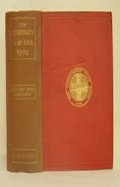Abstract
The reigning monarch, whose surname is Yi and name Heui, succeeded his predecessor—now known under his posthumous title of Ch‘yelchyong—in 1864. On October 15, 1897, he assumed the title of Emperor. He is reckoned as the thirtieth in succession since the founding of the present dynasty in 1392; but four of the so-called Kings were Crown Princes who never ascended the throne. Up to July, 1894, when war was declared by Japan against China, the monarchy, which is hereditary, was practically absolute. The constitution, the penal code, and the system of official administration were framed on the Chinese model, except that the government was in the hands of a hereditary aristocracy, exclusive and corrupt. Since early times Korea had acknowledged the suzerainty of China, a suzerainty which was denied by Japan and which was one of the alleged causes of the war between China and Japan, 1894. By the treaty of Shimonoseki, May, 1895, China renounced her claim, and under Japanese influence, with the aid of money borrowed from Japan, many reforms were introduced, such as the payment of taxes in money instead of in kind; fixed salaries for government officials; a reduction in the number of useless hangers on, and an effort towards order in the departments of State. There exists, however, a strong reactionary tendency, especially in the Household Department, and various abuses have recently revived. The constitution as it at present exists may be briefly described as follows:—The Emperor is an independent sovereign, but his power is to a certain extent modified by the Cabinet, which passes resolution. and frames laws which must be submitted to the Emperor for ratifications The privileges of the aristocracy have been abolished, and the selection of officers for government posts is made by the Ministers and officials of the first order, subject to the Emperor’s approval. The central government consists of 10 departments or ministries of state. The departments are those of (1) the Cabinet, presided over by the Premier, (2) the Home Office, (3) the Foreign Office, (4) the Treasury, (5) the War Office, (6) Education, (7) Justice, (8) Agriculture, Trade and Industry, (9) Household, and (10) Police. All Ministers have a seat in the Cabinet.
Access this chapter
Tax calculation will be finalised at checkout
Purchases are for personal use only
Preview
Unable to display preview. Download preview PDF.
Books of Reference concerning Korea
Foreign Office Reports on the Trade of Korea. Annual Series. London.
Bibliographie Coreenne. 3 vols. Paris, 1897.
Description of Korea (in Russian). Compiled at the Office of the Minister of Finance, 3 vols. St. Petersburg, 1900.
Bishop (Mrs. Isabella), Korea and her Neighbours. 2 vols. London, 1898.
Brandt (M. von), Ostasiatische Fragen. Leipzic, 1897.
Campbell (C. W.), Report of a Journey in North Corea. Blue Book. China No. 2. 1891
Cavendish (A. E. J.) and Goold-Adams (H. E.), Korea and the Sacred White Mountain. London, 1894.
Courant (M.), Bibliographie Coréenne. 3 vols. Paris, 1896.
Culin (Stewart), Korean Games. 4. Philadelphia, 1895.
Curzon (G. N.), Problems of the Far East. New ed. 8. London, 1896.
Dallet, Histoire de l’église de Corée. 2 vols. Paris, 1874. [This work contains much accurate information concerning the old political and social life, geography, and language of Corea].
Gale (J. S ), Korean Sketches. Edinburgh, 1898.
Griffis (W. E.), Corea: the Hermit Nation. New ed. London, 1903.
Gundry (R. S.), China and Her Neighbours. London, 1893.
Hamel (Hendrik), Relation du Naufrage d’un Vaisseau Holandois, &c., traduite du Flamand par M. Minutoli. 12. Paris, 1670. [This contains the earliest European account of Korea. An English translation from the French is given in Vol. IV. of A. and J. Churchill’s Collection, fol., London, 1744, and in Vol. VII. of Pinkerton’s Collection 4, London, 1811].
Hamilton (Angus), Korea. London, 1904.
Korean Repository. Published monthly. Seoul.
Laguérie (V. de), La Corée, Independante, Russe, ou Japonnaise. Paris, 1898.
Landor (H. S.), Corea, the Land of the Morning Calm. London, 1895.
Lowell (P.). Chosön: the Land of Morning Calm. London.
Miln (L. J.), Quaint Korea. London, 1895.
Oppert (E.), A Forbidden Land. London, 1880.
Wilkinson (W. H.). the Corean Government: Constitutional Changes in Corea during the Period July 23, 1894–June 30, 1896. 4. Shanghai, 1896.
Editor information
Copyright information
© 1904 Palgrave Macmillan, a division of Macmillan Publishers Limited
About this chapter
Cite this chapter
Keltie, J.S. (1904). Korea. In: Keltie, J.S. (eds) The Statesman’s Year-Book. The Statesman’s Yearbook. Palgrave Macmillan, London. https://doi.org/10.1057/9780230270336_27
Download citation
DOI: https://doi.org/10.1057/9780230270336_27
Publisher Name: Palgrave Macmillan, London
Online ISBN: 978-0-230-27033-6
eBook Packages: Palgrave Political & Intern. Studies CollectionPolitical Science and International Studies (R0)

